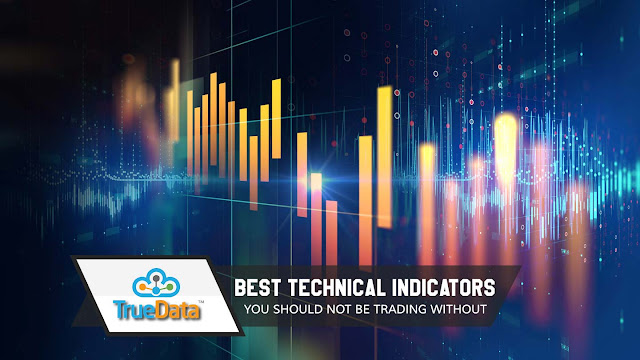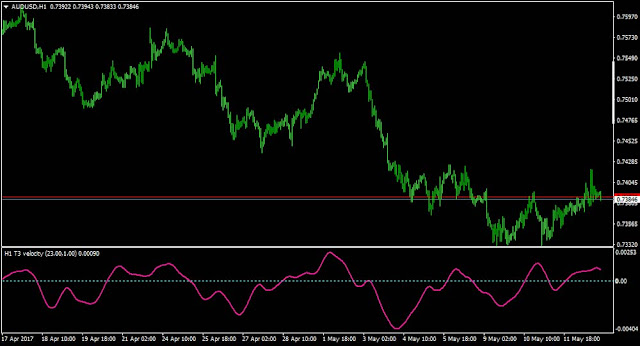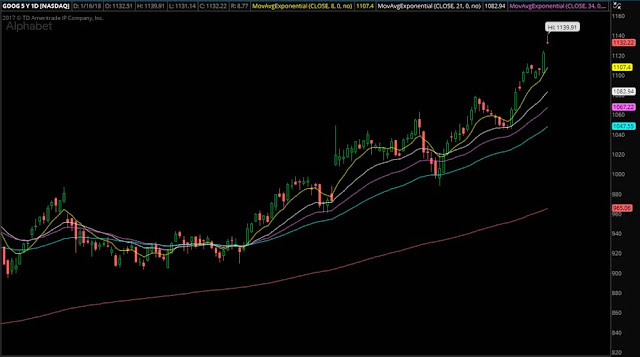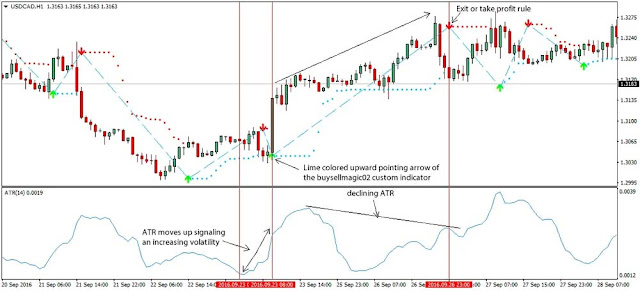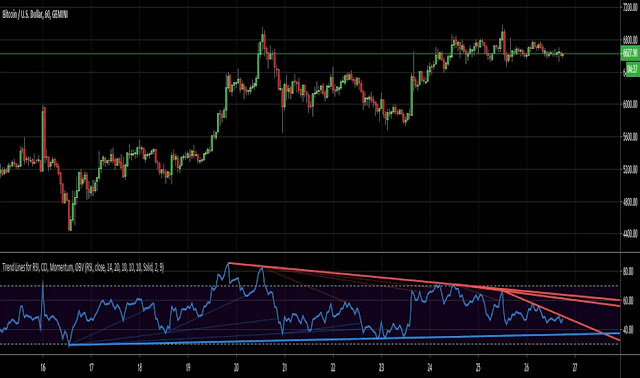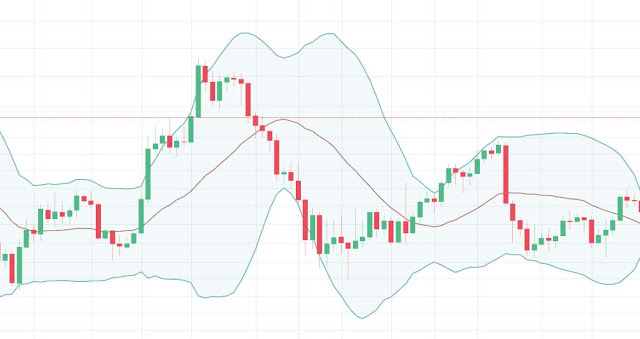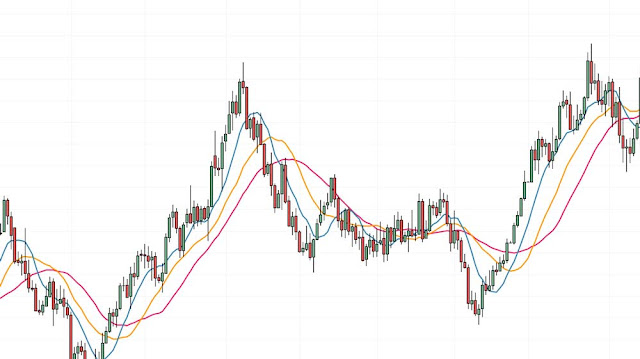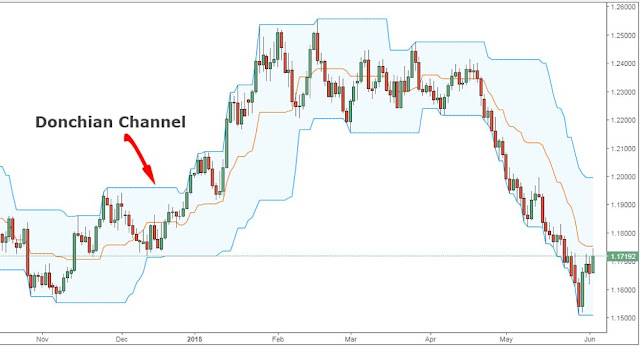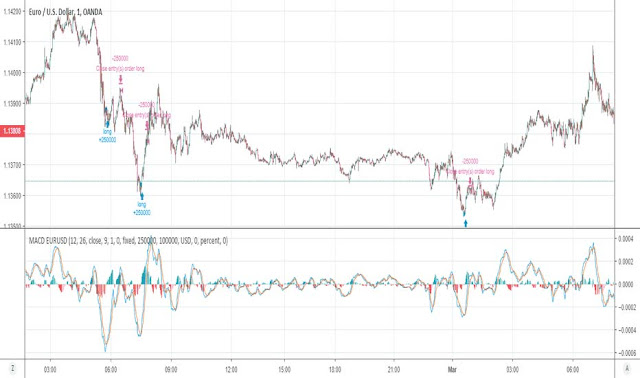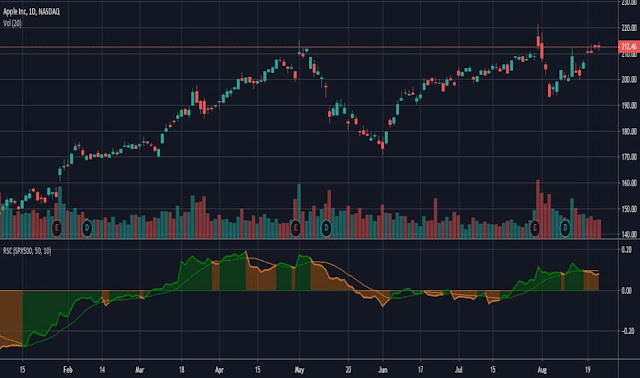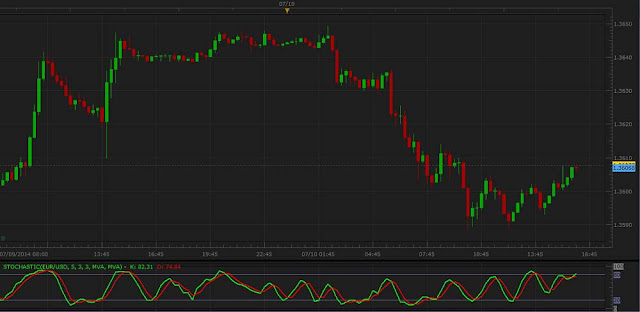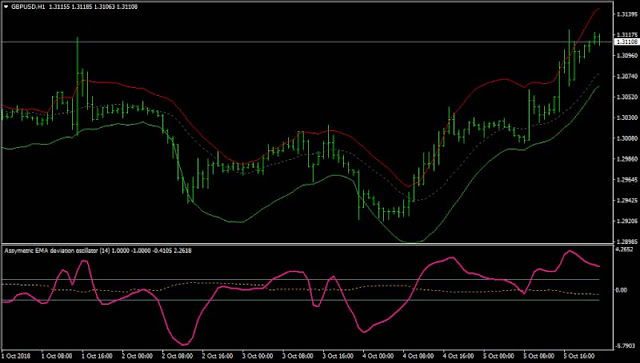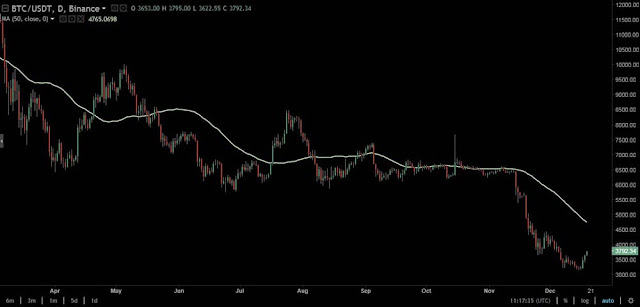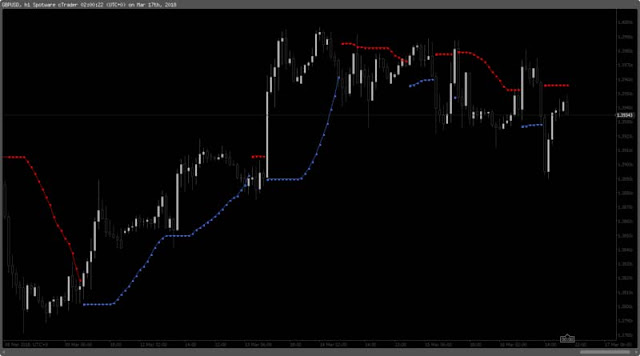When
we take our first step into the trading game, we choose the best resources for
ourselves. For rookie brokers, it can be a tad bit tedious to look for
the Best Technical indicator.
The
purpose of using Technical indicators is to follow the action and it influences
the way you interpret trends. Be it on positions and broad averages or the type
of opportunities that pop-up in those researches of yours.
Technical
indicators sure can be attractive and appealing, especially to those who are
putting their foot in the market. The indicators return a clear sign on whether
or not you should buy or sell the shares. One can interpret technical
indicators very easily across different markets.
Novices
usually wonder as to why technical indicators are of great importance in the
market.
Here’s
why?
When
you don’t use technical indicators, it will be difficult for traders to assess
the prevailing volatility of the market, the strength of a trend or whether
market positions are overbought or oversold.
Before
I go on listing the best technical indicators for you, there are three types of
technical indicators which you should unquestionably know –
Trend-following Indicators
Trend-following
indicators are meant for ascertaining the trends and measure the strength of a
trending market. Which yes, it can be told by looking at the price chart,
however, it is a bit difficult to measure its strength and to spot a trend when
it is early in its transformation.
Momentum Indicators
Momentum
indicators measure the strength of current price fluctuations in previous
periods. These indicators fluctuate between 0 to 100 which provides signals
whether the market conditions are overbought or oversold.
Volatility Indicators
Volatility indicators measure the volatility of the
underlying instrument. Traders chase volatility across markets to ensure they
find profitable opportunities to trade.
Here
is a list of the best technical indicators and you shouldn’t be trading without
these indicators.
Moving Averages
These
are not only popular day trading indicators but are ideal for both –
trend-following indicator and counter-following indicator. Moving
averages show the average of the last n-period closing prices. These averages
are generally plotted on the price chart. As a new closing price comes in, the
last closing price in the series drops and thus, moving average drops.
ATR – Average True Range
Indicator
Average
True Range Indicator is one of the best technical indicators which measures the
volatility of the market by considering the following – the current low
subtracted from the current high, previous close subtracted from the absolute
value of the current high, and the absolute value of the current low minus the
previous close.
ATR indicator takes together all the average of the values for a specified
period of time, which is further then plotted in the form of a moving average
on the chart.
RSI – Relative Strength Index
RSI
– Relative Strength Index is one of the popular and the best technical
indicators. This indicator measures the change in current price-changes and
reverts the reading between 0 to 100. Most of the time, RSI to know whether the
market is overbought or oversold.
The reading which says above 70 is usually indicating that the market is
overbought whereas a reading below 30 indicates that the market is oversold.
Bollinger Bands
This
technical indicator works on the basis of the moving average, it is ideal for
detecting the present market volatility. Bollinger bands contain three lines –
- The middle line is moving average.
- The upper and the lower lines are two standard
deviations which create a band since it is away from the moving average.
We
aren’t telling you to drop other kinds of analyses and trust technical
indicators blindly. However, technical indicators can come in handy when you’re
new to the market.
You
need not worry about which one to use because we have already listed the best
ones for you (they are not in any order of preference).
And
now, we will be addressing a few frequently asked questions –
Which
are the best indicators to identify short-term trend reversals in stock market
trading?
To
explain in simple words, a trend reversal is more or less your entry and exit
in the stock market. When you identify the best reversals. You will be on the
path to trading success in no time. There are consequences to false reversal
such as missing potential trading setups or you will have to scramble back to
be back in the flow.
With
that being said, here is the list of best technical indicators to find
short-term trend reversals –
Moving Average
One
of the favored methods of using a moving average is by examining its direction.
The strength of using moving averages is that it allows you to use a few of
them to keep a track of differing degrees.
However,
it comes with a drawback and that is if you use it too much then you will end
up turning its strength into a disadvantage.
Donchian Channel
Donchian
channel has maintained its status as a powerful trend tracking tool. In fact,
Donchian Channel is grounded with price action. It is not a typical indicator
with hard-to-grasp formula.
This
indicator has two lines. This helps in attaining the highest price and the
lowest price attained within the lookback period.
In
simple terms it means, defining a price range by using historical price action.
Moving Average Convergence
Divergence (MACD)
The
two moving averages of different periods diverge, when the trend strengthens
and the moving averages converge when the trend weakens.
A
price divergence is a very compelling reverse signal and happens to occur when
price and an oscillator disagree.
Which
indicators are the most useful when combined with technical analysis?
There
is a close relationship between technical indicators and Technical Analysis. Technical indicators help technical
analysis respond to any important volatility or price action as it takes place
in the price of a stock.
Technical
analysis can help the traders to determine the levels of support and resistance
in price whereas technical analysis helps the traders to determine whether the
price of the stock has dropped lower or climbed higher and to break out of the
last price range.
With
the combination of technical analysis and technical indicators, it helps the
traders to predict prices and start undervalued security with the right price
size at the right time.
We
have enlisted a few of the most useful technical indicators when combined with
Technical Analysis.
Relative Strength Indicator
Relative Strength Indicator or RSI is a momentum (the
rate at which price rise or fall) oscillator. RSI helps to compare the
magnitude of recent gains and losses over a particular period for measuring
speed and variation of price movements of a security.
This
indicator can show, whether the product is overbought or oversold by measuring
the magnitude of recent price changes.
Moving Averages
This
is one of the oldest and the most popular technical indicators used by traders
in technical analysis. It is more or less an average of past prices. It creates
a smooth price data and a single flowing line.
Stochastic Oscillator
This
is one of the most reliable momentum tools which help traders to measure the
current momentum, especially when compared to the lows and highs of a
historical set of prices.
The
prices tend to close near the high in an upward-trending market, and tend to
close near their low, in a downward-trending market.
Which
is one of the most reliable technical indicators for a Bullish Trend?
Technical
indicators are ideal for predicting the forthcoming changes in the price of the
stocks. For carrying out your Stock Analysis, trader can use the
combination of different charts and technical indicators.
Some
of the few reliable indicators for a bullish trend are –
Bollinger Band
This
indicator helps you to analyze the direction in which the stock price is moving
and also helps to find the market volatility. It consists of two bands, Upper
Band and Lower Band. For particular security, lines are used to depict the
volatility range on the basis of a standard deviation.
Stochastic Oscillator
We
compare one observation point in the current base with the highest and lowest
points from a specified range. It further helps to predict the strength of the
current trends.
What are the best technical
indicators for Intraday Trading?
Following
the basic intraday tips is a common practice for traders, be it a beginner or an
established trader. Trading strategy for every trader change with time.
To
maximize returns, it is necessary to understand the markets. Trading indicators
can help in maximizing revenue, If used with a comprehensive strategy.
The information offered by intraday Trading
Indicators –
- The direction of the trend to ascertain the
movement.
- The lack of existing momentum within the
investment market.
- Profit potential due to the volatility.
- Determine the popularity through volume
measurements.
Here
are the best technical indicators for intraday trading –
Moving Averages
If
long-term averages are more than short-term averages, it is an indication of a
bullish market trend. Traders may take a buy call with specific strategies like
stop-loss either at retracement support or long-term moving average and
vice-versa. It can help users to earn decent profits.
Bollinger Bands
There
is a great chance for the price to increase in the future only if the stock is
trading at a price prevailing below the Bollinger Band lower line. Traders can
sell the share when the current stock price is over the upper line.
Using
intraday indicators help to avert risk and place appropriate traders based on
market sentiments and technical analysis.
It
is not entirely true when they say that trading is based on our gut, rather it
is a blend of whole other lot of analyses, indicators, and gut.
Our
only advice is to keep trading and be safe.
And
on that note…
Adios!










